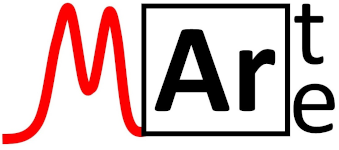
Teléfono: +34 876 553 503
Email: garciae@unizar.es
Dirección: c/Pedro Cerbuna 12, Universidad de Zaragoza, Facultad de Ciencias, Departamento de Química Analítica – Zaragoza (España)
SOBRE MÍ
PUBLICACIONES
2022
Resano, M.; Aramendía, M.; García-Ruiz, E.; Bazo, A.; Bolea-Fernandez, E.; Vanhaecke, F.
Living in a transient world: ICP-MS reinvented via time-resolved analysis for monitoring single events Artículo de revista
En: Chem. Sci., vol. 13, iss. 16, pp. 4436-4473, 2022.
@article{D1SC05452J,
title = {Living in a transient world: ICP-MS reinvented via time-resolved analysis for monitoring single events},
author = {M. Resano and M. Aramendía and E. García-Ruiz and A. Bazo and E. Bolea-Fernandez and F. Vanhaecke},
url = {http://dx.doi.org/10.1039/D1SC05452J},
doi = {10.1039/D1SC05452J},
year = {2022},
date = {2022-01-01},
urldate = {2022-01-01},
journal = {Chem. Sci.},
volume = {13},
issue = {16},
pages = {4436-4473},
publisher = {The Royal Society of Chemistry},
abstract = {After 40 years of development, inductively coupled plasma-mass spectrometry (ICP-MS) can hardly be considered as a novel technique anymore. ICP-MS has become the reference when it comes to multi-element bulk analysis at (ultra)trace levels, as well as to isotope ratio determination for metal(loid)s. However, over the last decade, this technique has managed to uncover an entirely new application field, providing information in a variety of contexts related to the individual analysis of single entities (e.g., nanoparticles, cells, or micro/nanoplastics), thus addressing new societal challenges. And this profound expansion of its application range becomes even more remarkable when considering that it has been made possible in an a priori simple way: by providing faster data acquisition and developing the corresponding theoretical substrate to relate the time-resolved signals thus obtained with the elemental composition of the target entities. This review presents the underlying concepts behind single event-ICP-MS, which are needed to fully understand its potential, highlighting key areas of application (e.g., single particle-ICP-MS or single cell-ICP-MS) as well as of future development (e.g., micro/nanoplastics).},
keywords = {},
pubstate = {published},
tppubtype = {article}
}
Bazo, Antonio; Garde, Raúl; Garcia-Ruiz, Esperanza; Aramendía, Maite; Nakadi, Flávio V.; Resano, Martín
High-resolution continuum source graphite furnace molecular absorption spectrometry for the monitoring of Sr isotopes via SrF formation: a case study Artículo de revista
En: J. Anal. At. Spectrom., vol. 37, iss. 12, pp. 2517-2528, 2022.
@article{D2JA00245K,
title = {High-resolution continuum source graphite furnace molecular absorption spectrometry for the monitoring of Sr isotopes via SrF formation: a case study},
author = {Antonio Bazo and Raúl Garde and Esperanza Garcia-Ruiz and Maite Aramendía and Flávio V. Nakadi and Martín Resano},
url = {http://dx.doi.org/10.1039/D2JA00245K},
doi = {10.1039/D2JA00245K},
year = {2022},
date = {2022-01-01},
urldate = {2022-01-01},
journal = {J. Anal. At. Spectrom.},
volume = {37},
issue = {12},
pages = {2517-2528},
publisher = {The Royal Society of Chemistry},
abstract = {High-resolution continuum source graphite furnace molecular absorption spectrometry (HR CS GFMAS) can provide isotopic information under certain conditions, thus broadening its field of application. However, to date, only elements with two major stable isotopes have been monitored via this technique. In this work, the possibilities of HR CS GFMAS to determine isotope ratios of elements with more than two stable isotopes are evaluated for the first time. For this purpose, Sr was chosen as the analyte and SrF as the target species, so four different signals corresponding to four stable Sr isotopes (88Sr, 87Sr, 86Sr and 84Sr) should be distinguished. Nevertheless, due to the number of strontium isotopes, the shape of the peaks, and the resolution that the instrument exhibits in the spectral window, isotopic signals overlap, thus leading to potentially biased results. To circumvent this issue, a deconvolution protocol, consisting of measuring and correcting for the contribution of each isotope on the signals of the rest, was developed. These contributions were calculated as the signal ratio between the absorbance of the monoisotopic profile at the wavelengths where the maxima of other isotopes are expected and at its own maximum. Therefore, the interference can be simply subtracted from the net signal registered for the interfered isotope. The performance of this method was demonstrated for both naturally abundant and isotope-enriched Sr standards, paving the way for future applications in this field. Analysis of a real sample (tap water) spiked with a 84Sr solution is also demonstrated.},
keywords = {},
pubstate = {published},
tppubtype = {article}
}
2020
Resano, Martín; Aramendía, Maite; Nakadi, Flávio V.; García-Ruiz, Esperanza; Alvarez-Llamas, César; Bordel, Nerea; Pisonero, Jorge; Bolea-Fernández, Eduardo; Liu, Tong; Vanhaecke, Frank
Breaking the boundaries in spectrometry. Molecular analysis with atomic spectrometric techniques Artículo de revista
En: TrAC Trends in Analytical Chemistry, vol. 129, pp. 115955, 2020, ISSN: 0165-9936.
@article{RESANO2020115955,
title = {Breaking the boundaries in spectrometry. Molecular analysis with atomic spectrometric techniques},
author = {Martín Resano and Maite Aramendía and Flávio V. Nakadi and Esperanza García-Ruiz and César Alvarez-Llamas and Nerea Bordel and Jorge Pisonero and Eduardo Bolea-Fernández and Tong Liu and Frank Vanhaecke},
url = {https://www.sciencedirect.com/science/article/pii/S0165993620301849},
doi = {https://doi.org/10.1016/j.trac.2020.115955},
issn = {0165-9936},
year = {2020},
date = {2020-01-01},
journal = {TrAC Trends in Analytical Chemistry},
volume = {129},
pages = {115955},
abstract = {Since the development of atomic spectrometry, trace element and isotopic analysis has been mainly based on the monitoring of atomic spectra and monoionic species. However, according to the literature and considering the current instrumental developments, it seems that some of the remaining challenges in this field can be mitigated via the measurement of molecular spectra or of polyatomic ions. This review discusses recent advances in three of the most important atomic techniques (laser-induced breakdown spectrometry, high-resolution continuum source atomic absorption spectrometry and inductively coupled plasma mass spectrometry) and how the monitoring of such molecules or polyatomic ions containing the target analyte enables attaining better selectivity and opens new ways to determine non-metals and to obtain isotopic information.},
keywords = {},
pubstate = {published},
tppubtype = {article}
}
Garde, Raúl; Nakadi, Flávio V.; García-Ruiz, Esperanza; Resano, Martín
En: J. Anal. At. Spectrom., vol. 35, iss. 11, pp. 2606-2619, 2020.
@article{D0JA00359J,
title = {Introducing multi-energy ratios as an alternative to multi-energy calibration for Br determination via high-resolution continuum source graphite furnace molecular absorption spectrometry. A case study},
author = {Raúl Garde and Flávio V. Nakadi and Esperanza García-Ruiz and Martín Resano},
url = {http://dx.doi.org/10.1039/D0JA00359J},
doi = {10.1039/D0JA00359J},
year = {2020},
date = {2020-01-01},
journal = {J. Anal. At. Spectrom.},
volume = {35},
issue = {11},
pages = {2606-2619},
publisher = {The Royal Society of Chemistry},
abstract = {This manuscript explores the advantages of using multi-signal calibration approaches for the determination of non-metals via high-resolution continuum source graphite furnace molecular absorption spectrometry (HR CS GFMAS), targeting Br as an example. Besides multi-energy calibration (MEC), a novel approach deriving from it, multi-energy ratios (MER), is introduced and compared under different conditions. This approach makes use of the same data but in a different way, such that no linear regression is performed; instead, ratios are calculated. This article investigates the potential errors deriving from the use of amounts of spike dissimilar from the sample content, leading to too high (close to 1) or too low (close to 0) slopes/ratios, setting the best conditions in terms of precision and accuracy for the intended determination in the range of approx. 0.5 to 0.6. Also, situations where the use of MER could be recommended over MEC are identified: namely when only a few transitions of sufficient sensitivity and free from overlaps are available or else, many transitions but of similar sensitivity, which may occur when HR CS GFMAS is deployed. Otherwise, for multiple transitions covering a wider sensitivity range, use of linear regression and thus, of MEC, seems favoured, as a better precision can be achieved. The calculation of limits of detection and quantification for both approaches is also discussed. It is finally further demonstrated that these multi-signal strategies help in solving chemical interferences, which very often hamper the determination of non-metals with HR CS GFMAS, and they do so in a simple way, without the need for laborious work or for the preparation of several standards and sample aliquots, therefore making them a very intriguing option when this technique is deployed.},
keywords = {},
pubstate = {published},
tppubtype = {article}
}
2019
Resano, M.; García-Ruiz, E.; Aramendía, M.; Belarra, M. A.
Quo vadis high-resolution continuum source atomic/molecular absorption spectrometry? Artículo de revista
En: J. Anal. At. Spectrom., vol. 34, iss. 1, pp. 59-80, 2019.
@article{C8JA00256H,
title = {Quo vadis high-resolution continuum source atomic/molecular absorption spectrometry?},
author = {M. Resano and E. García-Ruiz and M. Aramendía and M. A. Belarra},
url = {http://dx.doi.org/10.1039/C8JA00256H},
doi = {10.1039/C8JA00256H},
year = {2019},
date = {2019-01-01},
journal = {J. Anal. At. Spectrom.},
volume = {34},
issue = {1},
pages = {59-80},
publisher = {The Royal Society of Chemistry},
abstract = {After more than a decade since its commercial introduction, high-resolution continuum source atomic/molecular absorption spectrometry may be facing a mid-life crisis. Certainly, it is no longer a novel technique full of unknown potential, so it would already be time to establish the fields for which it is most suitable. This is, however, not so simple for a number of reasons. In the first place, more than a technique what we are discussing herein is a type of instrumentation with the potential to use two different techniques (atomic or molecular absorption), making it somewhat unique. Furthermore, the two techniques have not been explored equally, and more research on the mechanisms of formation of diatomic molecules is clearly needed. In the second place, new possibilities have recently appeared in the literature that need to be weighed as well. And there is the still unfulfilled, but nowadays more technically feasible than ever, promise to significantly increase the multi-elemental capabilities. This review critically examines the main research areas currently explored (namely, (i) direct analysis of solids and complex liquid materials, and (ii) determination of non-metals at trace levels via monitoring of molecular species) as well as the new venues (specifically, (i) isotopic analysis via monitoring of molecular species, and (ii) selective detection, quantification and sizing of nanoparticles) while also considering new instrumental developments, in an attempt to properly place high-resolution continuum source atomic/molecular absorption spectrometry in the field of trace element and isotopic analysis.},
keywords = {},
pubstate = {published},
tppubtype = {article}
}

